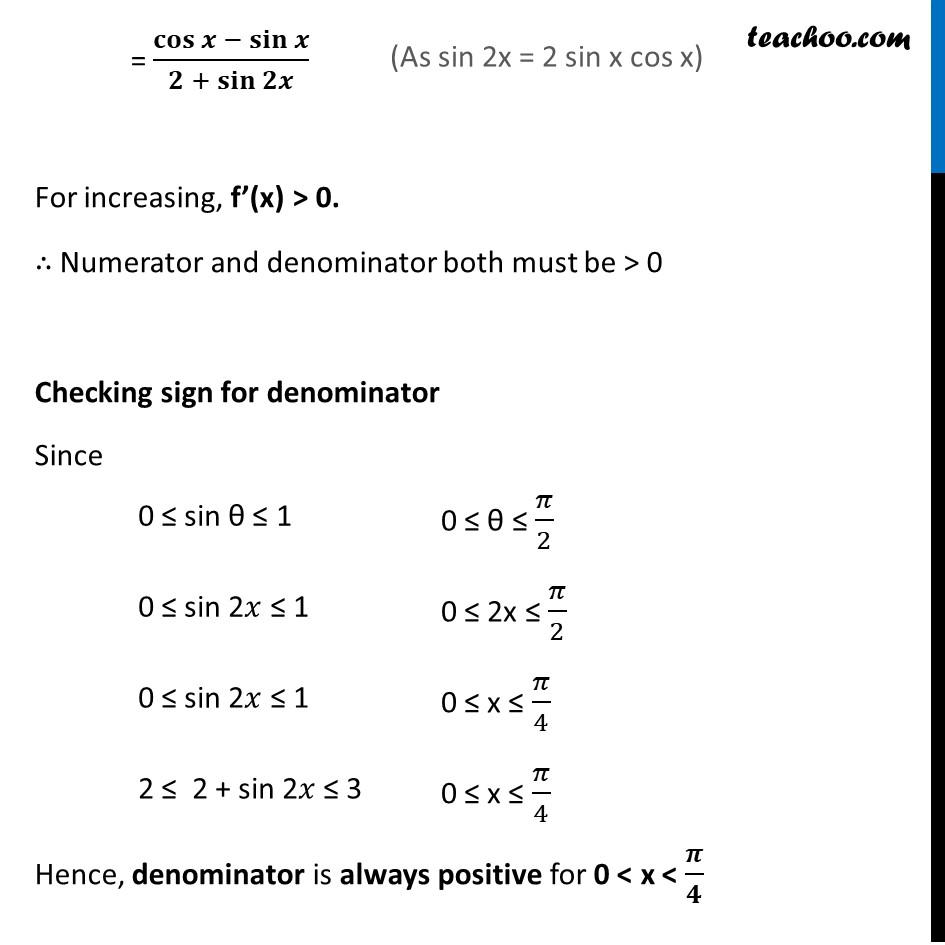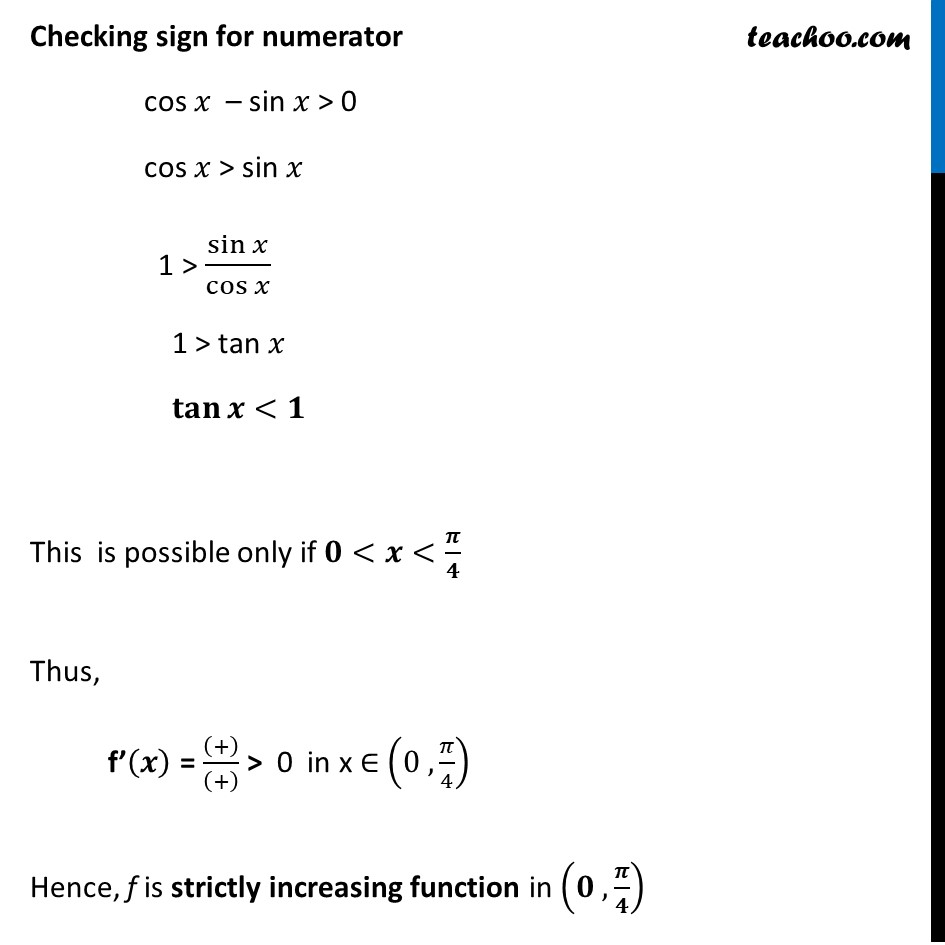


Examples
Last updated at Dec. 16, 2024 by Teachoo



Transcript
Example 34 Show that the function f given by f (x) = tan–1(sin x + cos x), x > 0 is always an strictly increasing function in (0,𝜋/4) f(𝑥)=tan^(−1)(sin𝑥+cos𝑥 ) Finding f’(𝒙) f’(𝑥) = (𝑑(tan^(−1)〖(sin𝑥 +cos𝑥 ))〗)/𝑑𝑥 = 1/(1 + (sin〖𝑥 + cos𝑥 〗 )^2 ) × 𝑑(sin〖𝑥 + cos𝑥 〗 )/𝑑𝑥 = 1/(1 + (〖〖𝐬𝐢𝐧〗^𝟐 𝒙〗〖+〖𝐜𝐨𝐬〗^𝟐〖𝒙 〗+ 2 sin𝑥 cos𝑥 〗 ) ) × (cos𝑥−sin𝑥 ) = 1/(1 + (𝟏 + 2 sin𝑥 cos𝑥 ) ) × (cos𝑥−sin𝑥 ) = 1/(2 + 2 sin𝑥 cos𝑥 ) × (cos𝑥−sin𝑥 ) = 𝐜𝐨𝐬〖𝒙 −〖 𝐬𝐢𝐧〗𝒙 〗/(𝟐 + 𝐬𝐢𝐧𝟐𝒙 ) For increasing, f’(x) > 0. ∴ Numerator and denominator both must be > 0 Checking sign for denominator Since Hence, denominator is always positive for 0 < x < 𝝅/𝟒 Checking sign for numerator cos 𝑥 – sin 𝑥 > 0 cos 𝑥 > sin 𝑥 1 > sin𝑥/cos𝑥 1 > tan 𝑥 𝐭𝐚𝐧𝒙<𝟏 This is possible only if 𝟎<𝒙<𝝅/𝟒 Thus, f’(𝒙) = ((+))/((+) ) > 0 in x ∈ (0 , 𝜋/4) Hence, f is strictly increasing function in (𝟎 , 𝝅/𝟒)